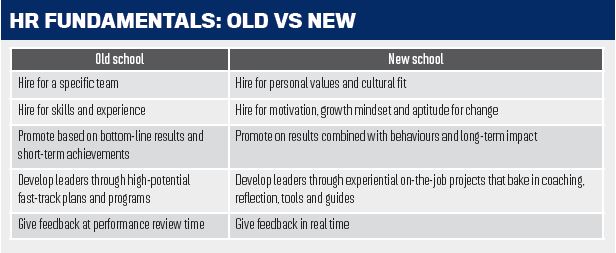

Much like millennials have changed the way we work, soon they will change the way we lead. However, Hiam Sakakini suggests the old leadership development models will not work for this generation
We’ve now moved firmly into an era in which millennials are taking on the responsibility of managing people.
The problem is their predecessors haven’t given serious consideration to the unique ways millennials learn, adapt and grow as professionals, and consequently are not arming them with the critical leadership capabilities that ensure future sustainability of an organisation.
I see it everywhere: senior leaders taking a page from the old textbook How to Manage and Grow a Workforce. But this advice simply doesn’t work any more for the 6.1 million millennials in the workforce today. How scary to think we are potentially missing easy opportunities to engage this segment of future leaders.
Having spent a significant portion of my career both managing a team of millennials and learning about their needs, it has become apparent to me that this old way of developing our future leaders doesn’t develop leaders any more.
To get some perspective, let’s look at the trends Gen Yers bring with them:
How you incorporate all of this into a journey that develops leaders for the future will determine the long-term success and stability of your organisation.

It starts with managers of managers
Typically, promotion and, therefore, by default, succession planning rewards bottom-line results. Type A personalities who are quite driven, fearless, competitive and focused do exceptionally well as individual contributors rising through the ranks because they are as goal driven with their careers as they are with their KPIs. They get noticed; they openly ask for a promotion, and they are seen as natural leaders over and above those who seem too emotional.
I will admit that, as a young saleswoman at Google who loved to smash through every target handed to me, I was that person. Before I knew it I had a team and was expected to teach them the tips and tricks that I knew instinctively. The problem was I was never equipped to coach and, as a result, I faltered … badly.
How can managers of managers play a crucial role?
Deconstructing leadership learning
This is a challenge! And it will require investment of time and the support of a good internal or external learning and development business partner, but the investment will pay off.
Within everyday workplace teams, projects and initiatives, there exist golden opportunities to learn valuable leadership lessons. This all starts with a) identifying the learning opportunity; b) keeping the right tools, principles and techniques at your fingertips to match the scenario at hand; c) having the guidance of an experienced facilitator who allows the team time to stop, reflect, give feedback and experiment.
I don’t think leadership programs will entirely be replaced by this approach. However, the tools and principles that lie within them can be deconstructed into bite-size, easy-to-use downloadables, facilitator guides and how-to videos that can be used within the life cycle of any project or initiative.
Capitalising on the learning opportunities within everyday business projects will mean a richer experience for all involved and potentially less time and money spent on formal leadership learning courses. Ultimately, the ramp-up time to upskill future leaders will be significantly shorter, coinciding with the trends of millennials and their itchy feet!
PS: an interesting side effect will be more ROI for your L&D budget.
Hiam Sakakini is the co-founder of Think Change Grow and is the former head of leadership development at Google APAC. During 14 plus years of working in Fortune 500 companies in a range of roles, Hiam has developed a passion for pinpointing the simplest strategies to help individuals and teams build the skills, confidence and competence needed to become genuinely customer-focused and deliver outstanding bottom-line business results. Visit thinkchangegrow.com.
